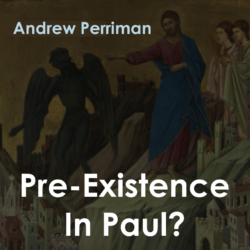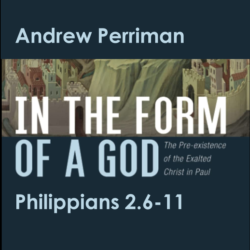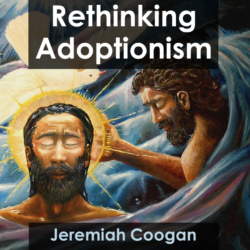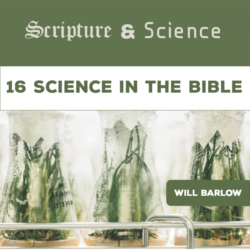Apologetics 4: Teleological Arguments for God’s Existence
If someone asked you, “Why do you believe in God?” How would you answer? Sadly, most of us would flounder around, maybe talking about the bible or second-hand miracles. However, philosophers have long identified three classic approaches to reasoning about God’s existence: the ontological, cosmological, and teleological arguments. In this lecture, you’ll learn several versions of the teleological argument–evidence for intelligent design–so that you can reason from the complexity of creation to the existence of the creator.
If you would like to take this class for credit, please contact the Atlanta Bible College so you can register and do the necessary work for a grade.
Notes:
introduce three main arguments
- cosmological: cause and effect
- teleological: order and design
- ontological: reason alone
general approach for teleological arguments:
- the universe exhibits a certain level of order and design
- a design requires a designer
- a designer of the universe exists
what proof is there that a painter exists? a painting
what does a building prove? a builder exists
what about a tree? it is more complex than a painting or building, doesn’t this prove a tree-maker exists
- relating to design or purpose especially in nature (m-w.com)
- it is based on order and design
- Romans 1.18-20 and Psalm 19.1-4
Advantages to the teleological argument
- It is very easy to prove because it is in experience
- The argument uses well established scientific facts to prove the existence of God
- True science will always lead to God. In the end science it the study of the creation and thus an indirect study of the Creator.
- “The conflicts between ‘science’ and ‘religion’ occur in historical science, not in operational science.”
(Answer’s Book, p. 21)
classic formulation:
William Paley’s Watchmaker Argument
- Suppose you were walking along the beach and saw a watch on the ground…
- How many parts are in the watch?
- biological complexity, cosmic complexity, the just right conditions for earth (distance from sun, etc.)
Cell Complexity (Biological Teleological Argument)
Consider a human cell
- blood-clotting mechanism, the bacterial flagellum, photosynthetic apparatus, pupal transformation from caterpillars to butterflies, complexity of human brain,
- “The most reasonable inference from such observations is that outside intelligence was responsible for a vast original store of biological information in the form of created populations of fully functioning organisms. Such intelligence vastly surpasses human intelligence…” (Answer’s Book, p. 29)
Information in DNA (Origin of Code Approach)
- it is an encoding/decoding system
- the sequence represents something other than itself (i.e. the genes contain the information about what an organism will be)
- It has an alphabet and a syntax (the combinations of letters mean something)
- A DNA sequence can be copied and stored on other media without a loss of information (only language has this property)
- In fact even committed atheists will refer to it as the DNA code (code is a language; think of Morse code or computer code)
- The DNA code contains information which is neither matter nor energy (though it is stored/transmitted/encoded/decoded by matter and energy)
- Language comes from a mind (there are no languages that do not come from a mind)
- this argument hinges on this assertion
- If DNA contains a language and language is designed and implemented by a mind then there exists a designer who created the language of DNA
This argument is developed in detail by Perry Marshall an information specialist on his website (http://www.cosmicfingerprints.com/ifyoucanreadthis1.htm)
Fine Tuning (A Version of the Teleological Argument)
A physical constant is a physical quantity that is generally believed to be both universal in nature and constant in time.
- for example the force felt due to gravitational attraction between two bodies is determined by an equation
- G is called the universal gravitational constant and is equivalent to 6.67×10-11. This number is assumed to be constant in all places at all times.
- Other constants include the speed of light in a vacuum, the charge of an electron, the strong force, the weak force, the electro-magnetic force, etc.
- These constants are not determined by nature but are supplied a priori as initial conditions.
- They could have been different and the laws of physics would continue acting the same.
- These constants determine the properties of the universe
- According to Francis Collins, director of the human genome project in America, there are 15 physical constants that need to be fine-tuned to allow for complex life.
- Furthermore, not only do the constants themselves need to be finely tuned, but their relationship to one another needs to be finely tuned.
“Take the relationship between electromagnetic and gravitational forces, for instance. These values are perfectly balanced with one another so as to facilitate the formation of stable stars like our sun. The gravitational force itself is far weaker than the electromagnetic force, so it plays essentially no role on the microscopic level of existence, yet it simultaneously dominates the macroscopic level of reality “hands down.” Indeed, if gravity were any weaker than it presently is, stars would have subsequently been much bigger, since more mass would have been required to generate a sufficient amount of gravitational pressure in their cores to support nuclear fusion. If, on the other hand, gravity were any stronger, stars would have subsequently been smaller, with much shorter life spans…”[1]
Roger Penrose:
“This now tells how precise the Creator’s aim must have been, namely to an accuracy of one part in 10^10^123. This is an extraordinary figure. One could not possibly even write the number down in full in the ordinary denary notation: it would be 1 followed by 10^123 successive 0’s. Even if we were to write a 0 on each separate proton and on each separate neutron in the entire universe—and we could throw in all the other particles for good measure—we should fall far short of writing down the figure needed.”[2]
- In Mathematics a probability of 1 in 1050 is considered “probability zero” (it is just not going to happen). Please note that the universe requires a vastly higher improbability than this. In fact, if it were to exist (which it does) without a being “fixing the numbers” that would qualify as a miracle on the order of someone walking through a wall.
- Since it is vastly more probable that a tornado would go through a junkyard filled with airplane parts and assemble a working 747 than that the universe at random acquired the correct constants to support life. I think we are on good grounds to cry out, “Conspiracy!” Since the conspirator(s) fixed the numbers he/she/it/they must have done so prior to the existence of the universe and so are not natural, but supernatural in nature—divine.
——————————–
[1] Michael A. Corey, The God Hypothesis, (NY: Rowman & Littlefield, 2001), p. 43.
[2] Roger Penrose, The Emperor’s New Mind (NY: Oxford University Press, 1989), p.326.






